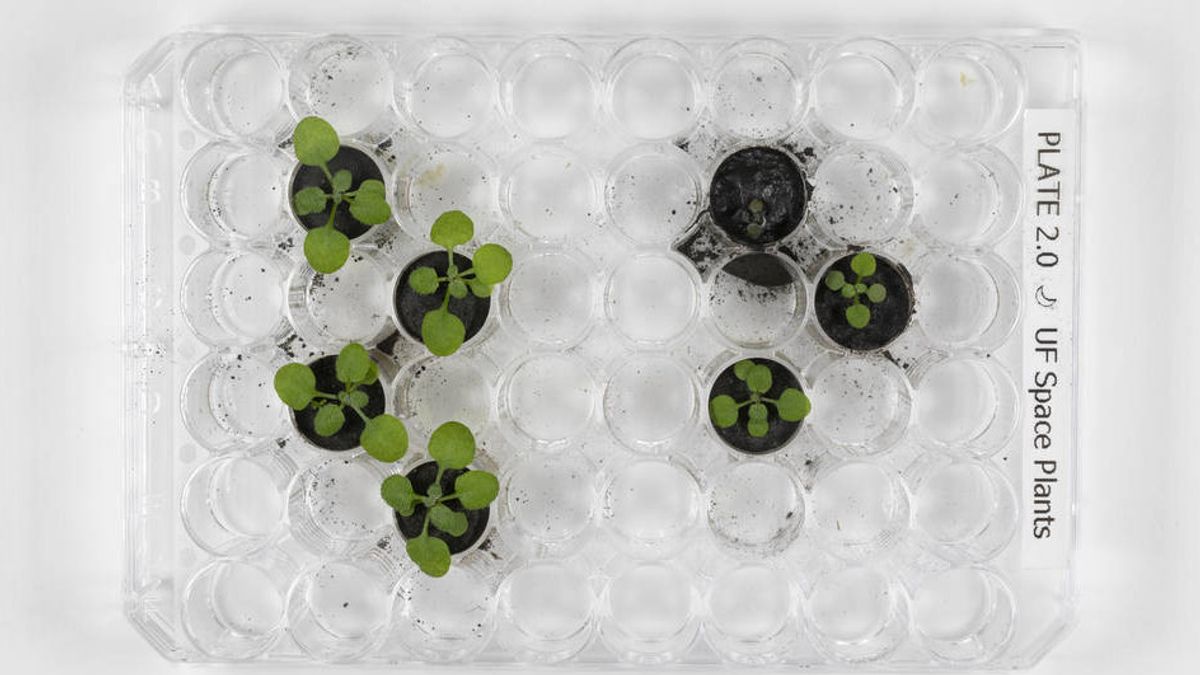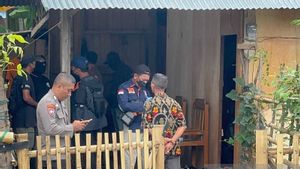JAKARTA - What happens if the land taken from the Moon is planted with vegetables? Can it grow well? Yes, that is what scientists are currently testing.
Armed with soil from the Moon collected by NASA's Apollo astronauts, known as regoliths, scientists also don't know if anything will grow in the harsh lunar soil.
By conducting this research, they wanted to see if the regolith could be used to grow food by the next generation of lunar explorers. However, the result surprised them.
"Gosh. Plants actually grow in the land of the moon. Are you kidding me?" said scientist at the University of Florida's Institute of Food and Agricultural Sciences, Robert Ferl.
Ferl and his colleagues planted thale lettuce aka arabidopsis thaliana in lunar soil carried by Neil Armstrong and Buzz Aldrin from Apollo 11, and other lunar explorers.
Arabidopsis thaliana, native to Eurasia and Africa, is a relative of mustard greens and other cruciferous vegetables such as broccoli, cauliflower and Brussels sprouts. This lettuce also plays a key role for scientists, due to its small size and ease of growth.
Arabidopsis thaliana is one of the most studied plants in the world, being used as a model organism for research in all areas of plant biology. Thus, scientists already know what its genes look like, how it behaves under different circumstances, and even how it grew up in space.
The good news is that all the seeds germinate. But that's not to say without a hitch, this soil has its drawbacks, namely that after the first week, the roughness and other properties of the lunar soil emphasize the tiny weeds that flower so that they grow more slowly than the seeds planted in the false moon soil from Earth. Most moon plants eventually become stunted.
Launching the official NASA website, Friday, May 13, the results of the study, published in Communications Biology, saw the soil being exposed to cosmic radiation and the solar wind on the Moon for a longer time, making crop conditions worse.
Apollo 11 samples were indeed exposed to radiation several billion years longer to the elements due to the older surface of the Sea of Tranquility, scientists say it is the least conducive to growth.
One solution might be to use geologically younger sites on the moon, such as lava flows, to excavate planting soil. The environment can also be changed, changing the nutrient mix or adjusting artificial lighting.
Only 842 pounds (382 kilograms) of moonstone and soil were brought back by the six Apollo crew. Some of the earliest lunar dust was sprinkled on plants under quarantine by Apollo astronauts in Houston after returning from the Moon.
For your information, this research opens the door not only to someday growing plants in habitats on the Moon, but to a variety of additional questions. Could understanding which genes plants need to adapt to grow in the regolith help us understand how to reduce the stress properties of lunar soils?
Are materials from different regions of the Moon more conducive to growing plants than others? Could studying lunar regolite help us understand more about Martian regolite and the plants that could potentially grow on that material as well? These are all questions the team hopes to study next, to support future astronauts traveling to the Moon.
"Not only is it great for us to have plants around us, especially as we venture to new destinations in space, but they can provide additional nutrients to our diet and enable future human exploration," explained program scientists in NASA's Biological and Divisional Division. Physical Sciences (BPS), Sharmila Bhattacharya.
Lastly, scientists hope to recycle their lunar soil later this year, planting more thale cress before moving on to other vegetation.
The English, Chinese, Japanese, Arabic, and French versions are automatically generated by the AI. So there may still be inaccuracies in translating, please always see Indonesian as our main language. (system supported by DigitalSiber.id)













